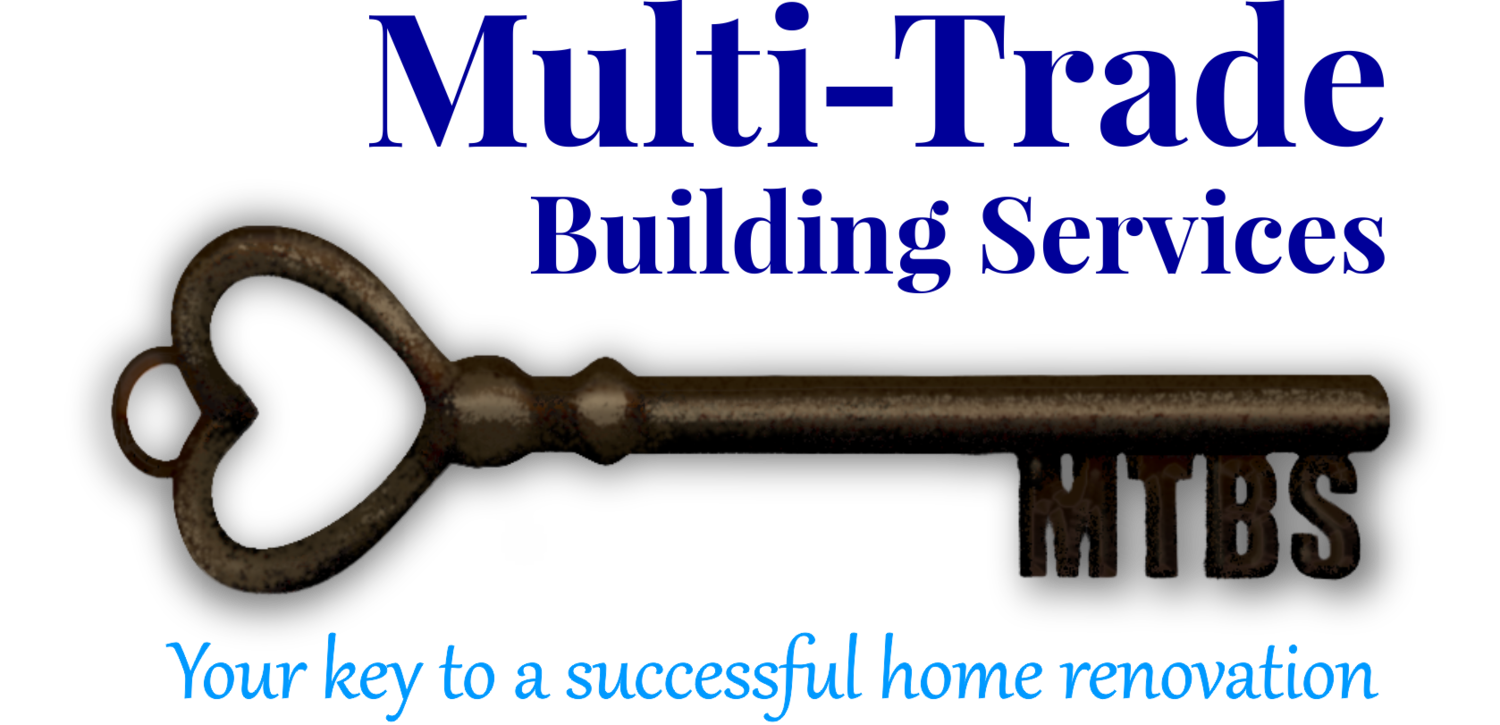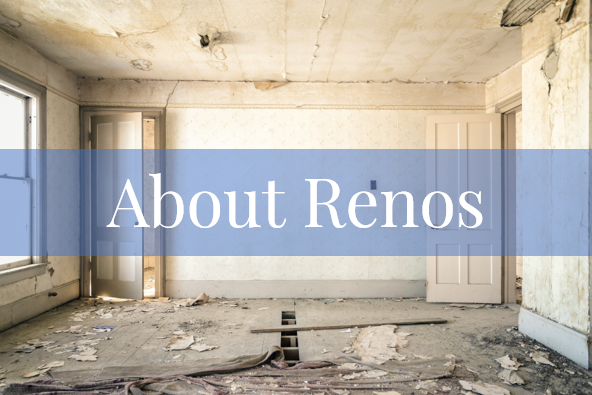5 Surprising Causes of Bathroom Mold and How to Prevent Them
/Have you ever noticed stubborn black spots creeping along the edges of your bathroom tiles or lurking in the corners of your shower? Mold in the bathroom is a common issue that not only looks unsightly but can also pose a serious health risk. While we often associate bathroom mold with dampness and poor ventilation, there are actually some surprising causes that can lead to its growth. In this article, we will delve into the unexpected culprits behind bathroom mold and provide you with effective strategies to keep it at bay. From hidden moisture sources to inadequate insulation, we will explore the lesser-known factors that contribute to mold growth in the bathroom. By understanding these causes and implementing the prevention strategies discussed, you can create a healthier and mold-free environment for yourself and your family. Say goodbye to the pesky black spots and say hello to a clean, dry, and mold-free bathroom.
Dangers of Mold and Symptoms of Exposure
Mold in the bathroom is not just an aesthetic issue—it can also be a health hazard. Exposure to mold can cause a range of symptoms and, in some cases, even lead to serious health conditions. Identifying the dangers of mold and understanding the symptoms of exposure are crucial to keeping yourself and your family safe.
One of the most common symptoms of mold exposure is respiratory problems. If you find yourself constantly coughing, wheezing, or experiencing difficulty breathing, it might be a sign that mold is present in your bathroom. Mold spores can irritate the lungs and airways, particularly for those who already have respiratory conditions such as asthma or allergies.
In addition to respiratory issues, exposure to mold can also cause allergic reactions. These reactions might manifest as sneezing, itching, or a runny nose. If you notice these symptoms becoming more frequent or worsening when you enter the bathroom, it could indicate the presence of mold.
Furthermore, mold exposure can lead to skin irritation and rashes. If you develop unexplained redness, itchiness, or dryness on your skin after being in the bathroom, it could be a result of mold growth. Pay attention to any changes in your skin health and consult a healthcare professional if necessary.
Beyond respiratory and skin issues, mold can also have a negative impact on your overall well-being. Some individuals experience fatigue, headaches, or difficulty concentrating when exposed to mold. If you notice these symptoms persisting or worsening, it is important to investigate the presence of mold in your bathroom.
By being aware of the potential dangers and symptoms of mold exposure, you can take proactive measures to protect yourself and your family. Regularly inspect your bathroom for signs of mold, such as discoloration or musty odours. Ensure proper ventilation by using exhaust fans or opening windows during and after showers. Keep moisture levels in check and promptly address any leaks or water damage. Lastly, maintain cleanliness by regularly cleaning and drying bathroom surfaces.
By understanding the risks and implementing prevention strategies, you can create a healthier environment and minimize the chances of mold-related health issues. Don't let the unsightly black spots compromise your well-being—take action against bathroom mold today.
Identifying Mold-Prone Areas
Being aware of the potential dangers and symptoms of mold exposure is essential for maintaining a healthy bathroom environment. Regularly inspecting your bathroom for signs of mold, such as discoloration or musty odours, is a proactive measure that can help you identify and address potential mold issues before they become significant problems.
One area to pay close attention to is the shower or bathtub. These areas are particularly susceptible to mold growth due to their constant exposure to moisture. The grout lines between tiles, in particular, can easily trap moisture and become a breeding ground for mold. Regularly inspecting and cleaning these areas will help prevent mold from taking hold.
Additionally, areas around sinks and toilets should not be overlooked. Water splashes and leaks can occur around these fixtures, creating a damp environment that is conducive to mold growth. Pay attention to any discoloration or water damage in these areas, as it can be a clear indicator of mold presence.
Another often overlooked area is the underside of the bathroom sink. This space is dark and often damp, making it a prime location for mold to flourish. Regularly check for any signs of moisture or mold growth in this area, and consider keeping it well-ventilated to prevent a buildup of moisture.
Finally, don't forget to inspect the ceiling and walls of your bathroom. Condensation can accumulate on these surfaces, especially if ventilation is inadequate. Look for any signs of discoloration or peeling paint, as these can be signs of mold growth. Properly ventilating your bathroom by using exhaust fans or opening windows during and after showers can help reduce moisture levels and minimize the risk of mold growth.
By being proactive in identifying and addressing potential mold-prone areas in your bathroom, you can create a healthier environment and minimize the chances of mold-related health issues. Regular inspections, prompt action to address any leaks or water damage, and maintaining cleanliness will go a long way in preventing the unsightly black spots of mold. With these preventive measures in place, you'll be better prepared to tackle the hidden moisture sources discussed in the next section.
1. Hidden Moisture Sources
An often overlooked area is the bathroom floor. Cracks or gaps in the flooring can allow water to seep underneath, creating a damp environment that promotes mold growth. Regularly inspecting and addressing any issues with the floor, such as resealing tiles or repairing cracks, can help prevent moisture buildup.
Additionally, don't forget to pay attention to any plumbing fixtures or pipes hidden within your walls. Leaky pipes or faulty plumbing can result in hidden water damage, providing a perfect breeding ground for mold. It's important to promptly address any leaks or water damage, fix the source of the problem, and thoroughly dry the affected areas to prevent mold from taking hold.
By being proactive in identifying and addressing potential hidden moisture sources in your bathroom, you'll be better prepared to tackle the next section on inadequate ventilation. These measures, coupled with regular inspections, prompt action on leaks or water damage, and maintaining cleanliness, will help create a healthier bathroom environment and minimize the chances of mold-related health issues. With these preventive steps in place, you can bid farewell to those unsightly black spots of mold and enjoy a mold-free bathroom.
2. Inadequate Ventilation
One often overlooked factor that contributes to bathroom mold is inadequate ventilation. When steam and humidity from hot showers or baths accumulate in a poorly ventilated bathroom, it creates a damp environment that is ideal for mold growth. Without proper ventilation, the moisture in the air has no way to escape, allowing it to cling to surfaces and encourage mold spores to thrive.
To prevent this issue, it’s crucial to ensure your bathroom is adequately ventilated. One effective way to achieve this is by installing a ventilation fan. This fan should be powerful enough to extract the moist air from the room, helping to reduce humidity levels and minimize the chances of mold growth. Remember to run the fan during and after every shower or bath to ensure moisture is actively removed from the air.
If your bathroom lacks a ventilation fan, opening windows or using a dehumidifier can help improve air circulation and reduce humidity. By allowing fresh air to flow through the space and removing excess moisture, you can create an environment that is less favourable for mold to develop.
While addressing inadequate ventilation may not directly fix existing mold problems, it is an essential step in preventing mold from reoccurring. By incorporating proper ventilation techniques into your bathroom routine, you can significantly reduce the chances of mold growth and create a healthier environment for both you and your family.
By being proactive in identifying and addressing potential hidden moisture sources in your bathroom, such as leaks or water damage, you can effectively prepare for the next section on leaky fixtures and plumbing. These preventive measures, combined with regular inspections and a focus on cleanliness, will not only minimize the chances of mold-related health issues but also help maintain a mold-free bathroom. With these steps in place, you can bid farewell to those unsightly black spots of mold and enjoy a fresh, clean bathroom space.
3. Leaky Fixtures and Plumbing
Leaky fixtures and plumbing are notorious culprits for bathroom mold growth. Even a small, unnoticed leak can create the perfect breeding ground for mold. Leaky faucets, showerheads, toilets, or pipes allow water to accumulate in areas beyond your sight, like within walls or under flooring. These hidden moisture sources become a paradise for mold spores to thrive.
To prevent leaks from causing mold problems, it's crucial to promptly address any signs of water damage or leakage. Keep an eye out for discoloured patches on walls or ceilings, warped or wet flooring, or a musty odour. These could be indications of a leak hidden within your bathroom fixtures or plumbing. Ignoring these signs can lead to not only mold growth but also costly repairs down the line.
Regular inspections are key to catching and fixing leaks early on. Check under sinks, behind toilets, and around showers for any signs of moisture or dripping water. Pay attention to any unusual sounds, such as running water, when faucets are not in use. If you notice any issues, it's best to call a professional plumber to assess and repair the problem promptly.
In addition to addressing leaks when they occur, it's important to practice good maintenance habits to prevent leaks from happening in the first place. Avoid turning faucets or showerheads too tightly, as this can cause excessive pressure on the seals and lead to leaks. Be cautious not to overtighten plumbing connections when installing or replacing fixtures. Regularly inspect the caulking around your shower or bathtub to ensure it remains intact and provides a watertight seal.
By taking the necessary steps to prevent and address leaks and water damage in your bathroom, you'll be setting yourself up for success in combating mold growth. With leaky fixtures and plumbing under control, we can now delve into the next surprising cause of bathroom mold: improper insulation.
4. Improper Insulation
Improper insulation is another surprising cause of bathroom mold. Although it may not be immediately obvious, the quality of insulation in your bathroom can have a significant impact on mold growth. Inadequate insulation can lead to condensation buildup, which creates the perfect environment for mold to thrive.
When a bathroom lacks proper insulation, the temperature difference between the warm, moist air inside and the cold surfaces outside can cause condensation to form. This condensation can accumulate on walls, windows, and even ceilings, providing the moisture that mold needs to grow. Additionally, improper insulation can result in drafts and poor air circulation, further exacerbating the problem.
To prevent mold growth caused by improper insulation, it's crucial to ensure that your bathroom is properly insulated. Start by examining the walls and ceilings to check for any gaps or areas where insulation may be lacking. Consider adding insulation in these areas to create a barrier that prevents warm, moist air from coming into contact with cold surfaces.
Another aspect to consider is insulating pipes. Uninsulated or poorly insulated pipes can also contribute to condensation and subsequent mold growth. Insulating pipes will help keep the temperature of the water more stable, reducing the chances of condensation forming on the pipes themselves and in their vicinity.
By addressing inadequate insulation in your bathroom, you'll be taking a proactive step towards preventing mold growth. With insulation in check, we can now move on to the next surprising cause of bathroom mold: neglected maintenance.
5. Neglected Maintenance
One aspect of bathroom mold prevention that is often overlooked is neglected maintenance. When we think about maintaining our bathrooms, we usually focus on keeping things clean and in working order. However, there are other maintenance tasks that play a crucial role in preventing the growth of mold.
It's important to keep an eye on your bathroom fixtures. Over time, seals and caulking around sinks, bathtubs, and showers can deteriorate, allowing water to seep into cracks and crevices. This trapped moisture not only damages the fixtures but also provides a breeding ground for mold. By regularly inspecting and maintaining the seals and caulking in your bathroom, you'll be preventing moisture buildup and reducing the risk of mold growth.
Another neglected maintenance task is keeping your bathroom clean and free of clutter. Mold thrives in damp and dark places, making cluttered spaces ideal for its growth. By regularly decluttering and organizing your bathroom, you'll be improving airflow and reducing the areas where mold can hide. Additionally, regularly cleaning your bathroom surfaces and fixtures with mold-inhibiting products will help eliminate any existing mold spores and prevent their regrowth.
By addressing neglected maintenance tasks in your bathroom, you'll be taking proactive steps to prevent mold growth. Proper ventilation, checking for leaks, maintaining seals and caulking, and keeping your bathroom clean and clutter-free are all important aspects of maintaining a mold-free environment.
In summary…
Understanding the surprising causes of bathroom mold can help you create a healthier environment and prevent its growth. By recognizing the dangers of mold and its symptoms, as well as identifying mold-prone areas, hidden moisture sources, inadequate ventilation, leaky fixtures and plumbing, improper insulation, and neglected maintenance, you can take proactive steps to keep your bathroom clean and mold-free.
Implementing the prevention strategies discussed in this article will ensure that your bathroom remains a dry and sanitary space, free from the harmful effects of mold. Remember, it's not just about wiping away visible mold; it's about addressing the underlying causes to maintain a long-term solution.
As you bid farewell to bathroom mold, take action today. Whether it's installing better ventilation, fixing leaky fixtures, or addressing insulation issues, make a commitment to creating a mold-free environment. Your health and the well-being of your loved ones depend on it.
In the wise words of Benjamin Franklin, "An ounce of prevention is worth a pound of cure." So, take charge of your bathroom's mold problem and let it serve as a reminder of the importance of regular maintenance. With these strategies in place, your bathroom will not only be cleaner and healthier but also a space where you can enjoy peace of mind.
If your bathroom doesn’t currently have a functioning exhaust fan, give us a call at 905-259-3344 to book a consultation and quotation. Installing and properly using an exhaust fan can be a big step toward preventing mold growth. Not sure if your fan is working effectively? Read our blog post here to learn how to check your fan.


















